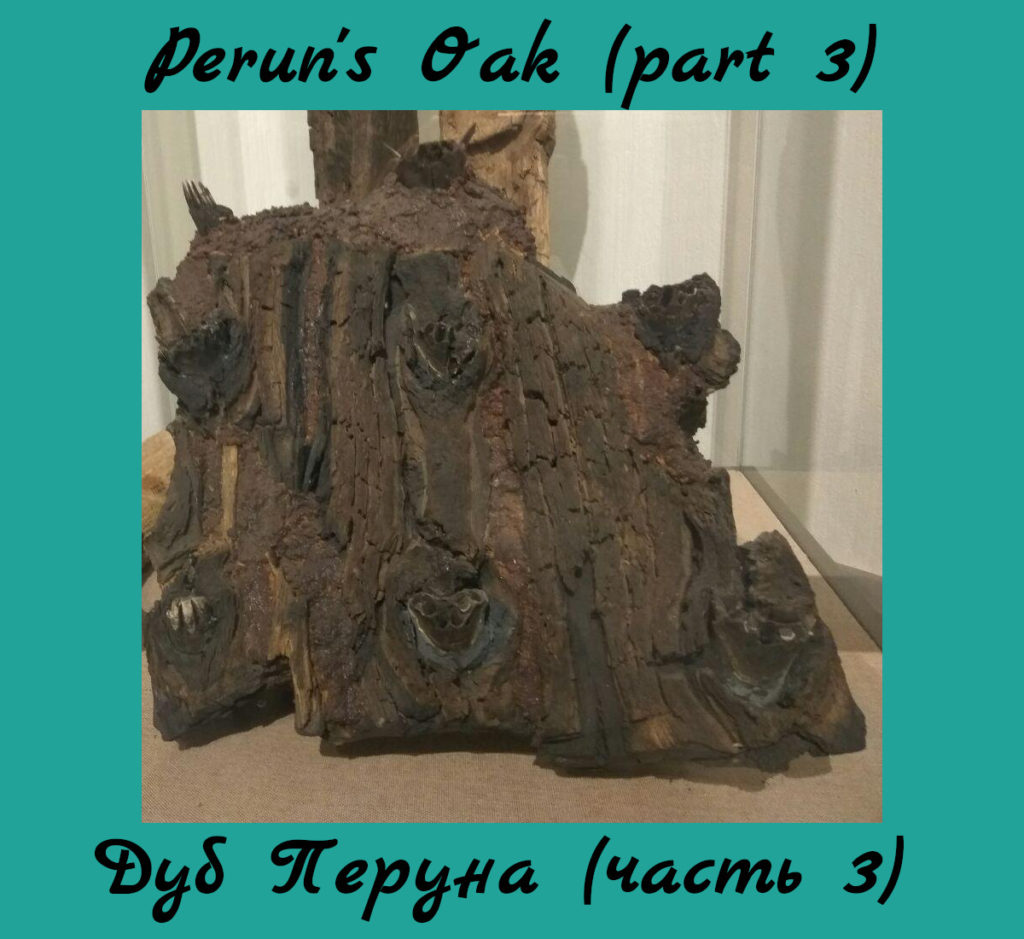Perun’s Day is a Slavic warriors holiday celebrated on the 20th of July. After praising Perun, the warriors begin to sanctify their weapons: swords, axes, knives and other weapons are placed on the shields at the shrine. Warriors’ amulets are sanctified over the sacrificial fire.
ꏍ
Eight days prior, lots are drawn (“cherty”, to determine the sacrifice, and “rezy”, to determine its quantity). A bull, a rooster, money or food can be chosen as a sacrifice. The lot can also be drawn for warriors to engage in a duel. The fighters agree among themselves on the choice of weapons or wrestling.
ꏍ
Then a ritual battle begins, dedicated to the victory of Perun over Veles (Perun defeats Veles and returns the herd of heavenly cows). At the end of the battle, the warriors carry a boat with gifts and put it on “krada” (ritual fire).
ꏍ
On this day, ceremonial initiations into warriors are held, as well as a rite at which all fallen Slavic warriors are commemorated. Ritual food: beef, game meat, chicken, porridge. Drinks: honey, red wine, beer, kvass.
ꏍ
Based on materials from the book by V. S. Kazakov “The World of Slavic Gods”, 7th edition.
ꏍ
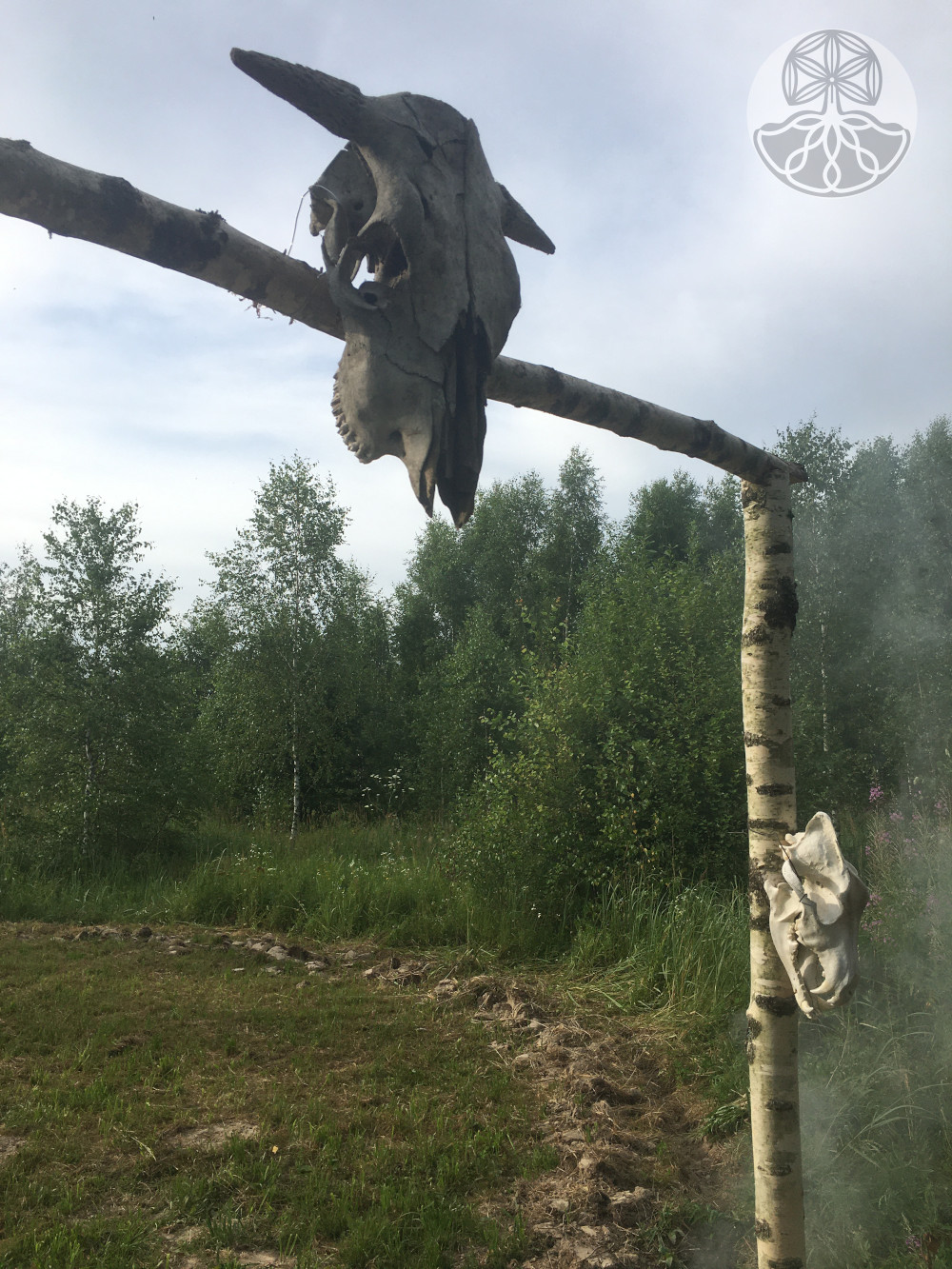
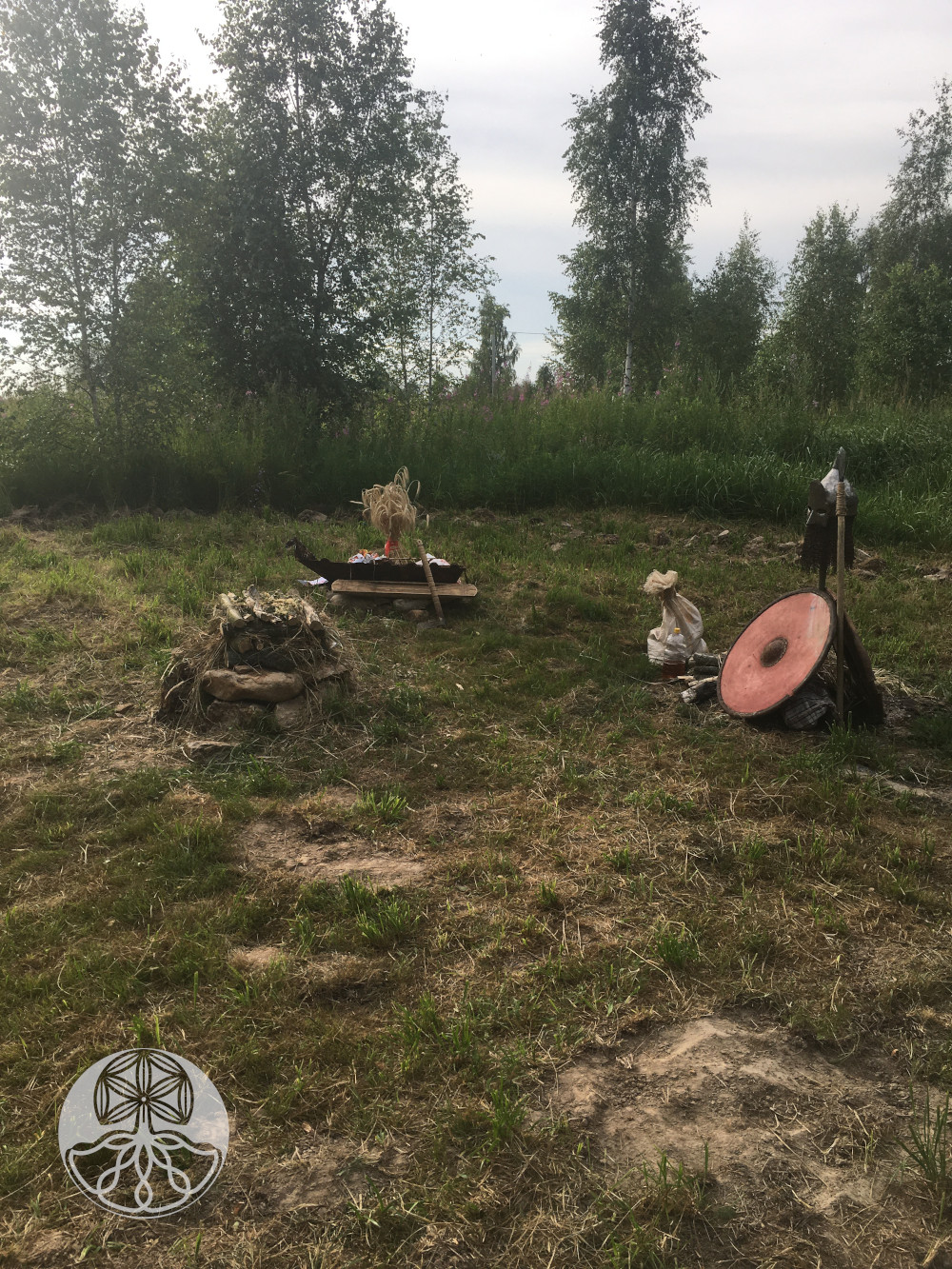
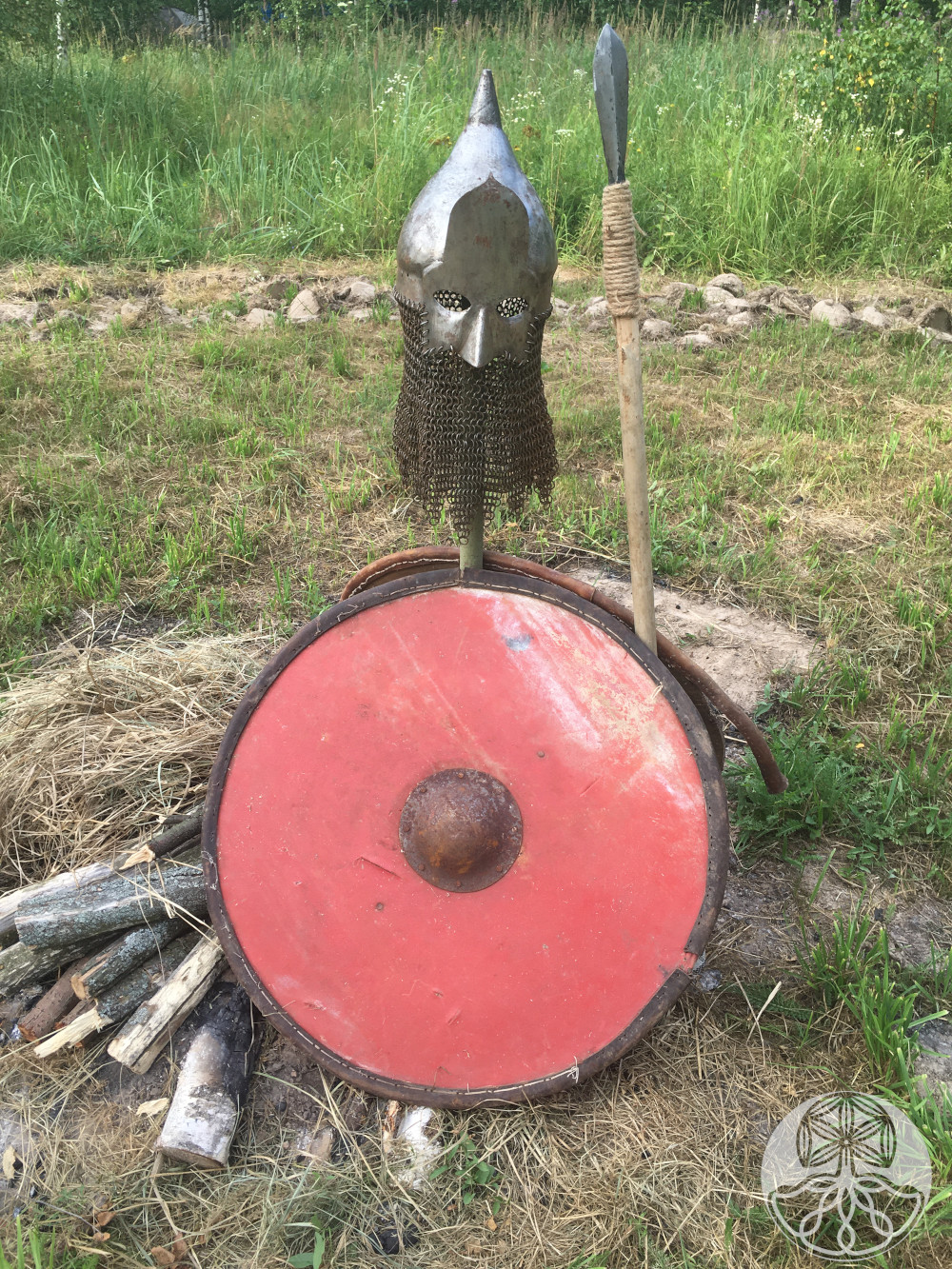
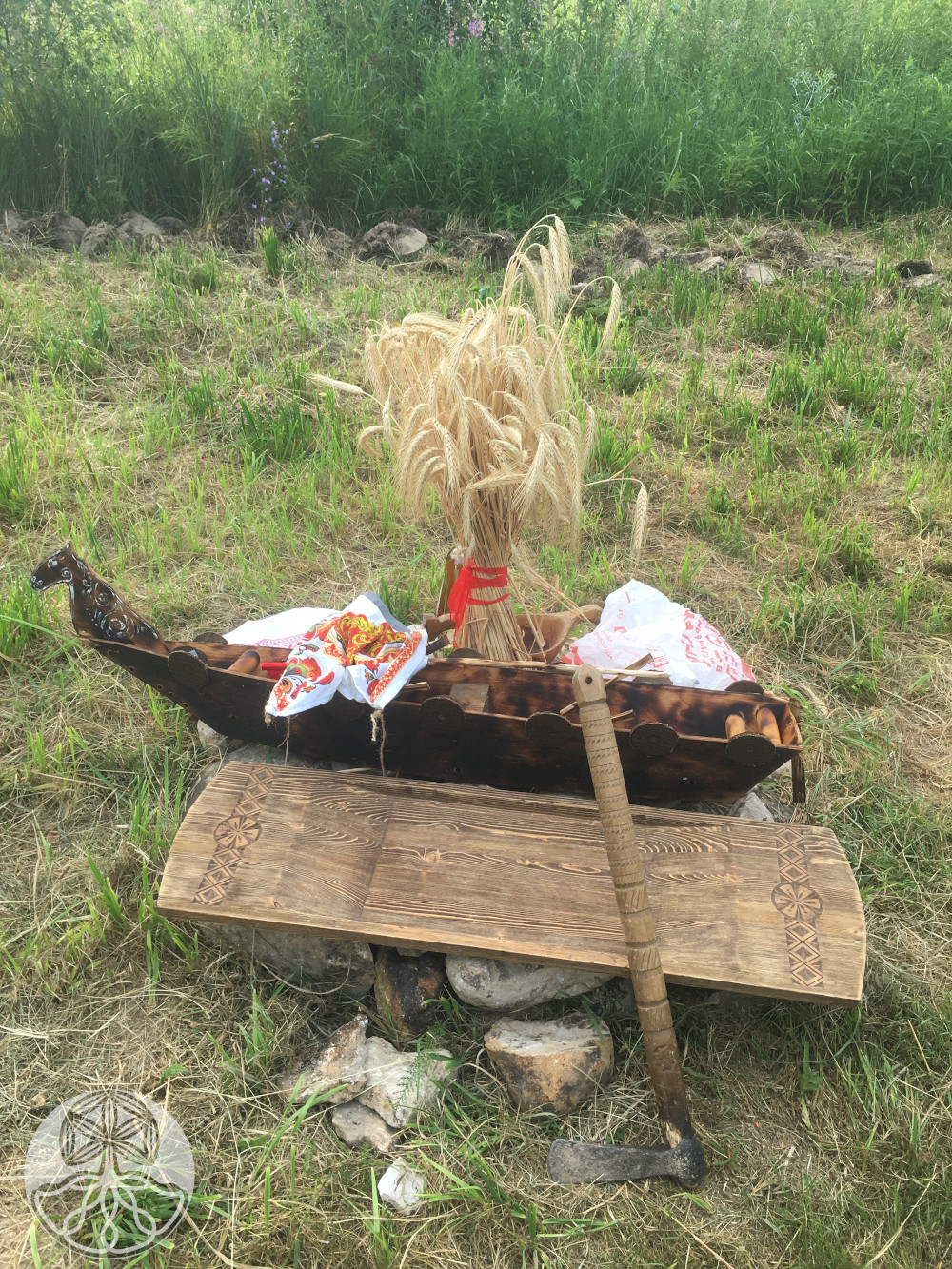
Gromoboi – part 2
Gromoboi was also used as protection from thunder and lightning in the Zhitomir region, where a house was fumigated with its wooden chips. In Slovenia our Slavic ancestors during a thunderstorm used to put Gromoboi splinters inside a fireplace or on a top of burning coals to ward off trouble.
ꏍ
Across the territory of modern Ukraine and Belarus, Gromoboi was widely used for healing purposes. People chewed its chips to keep their teeth strong “like thunder” and rinsed their mouth with a decoction of water boiled Gromoboi bark. They also scraped the burned part of the Gromoboi and prepared “black drink” against the “black disease” – epilepsy, as well as boiled the Gromoboi chips to be used against back pains. In the Zhitomir region, people believed that inside the Gromoboi trunk (which they called “Thunder Tree”) there is always a “fiery candle” that heals any disease.
ꏍ
In Belarus people used Gromoboi to make a special wooden tub for sourdough bread preparation (it was called “dezha”) – so that “the witch would not steal the top part of the dough”. In Poland, it was believed that bread would grow quickly in such a wooden tub, if the tub was made by cooper in one day and from a pine tree broken by lightning.
ꏍ
Source: “Slavic Antiquities” – encyclopedic dictionary in 5 volumes by Institute for Slavic Studies of the Russian Academy of Sciences.

Gromoboi – part 1
The Slavs believed that the god Perun, during a thunderstorm, strikes with lightning those places where an evil spirit is hiding (or devil in a later interpretation). A stone, a person, water and of course a tree could become a shelter for an evil spirit. According to Slavic beliefs, if a tree was struck by thunderbolt, it acquired magical properties. Such trees were called “Gromoboi” in Russia (derived from “grom” – thunder, and “boi” – hit).
ꏍ
Gromoboi was not used in construction as a dangerous tree that attracts thunderbolt. The presence of Gromoboi in the wall of a house, according to the beliefs of the Poleshchuks, led to death, illness and discord in the family, a fire from lightning, and other troubles. The Serbs either did not extinguish the tree, lit by the lightning, or did not use it at all for construction or as a firewood. In Northern Bosnia, it was believed that if you use Gromoboi as a firewood to boil your clothing for washing, it would fall to shreds.
ꏍ
To be continued…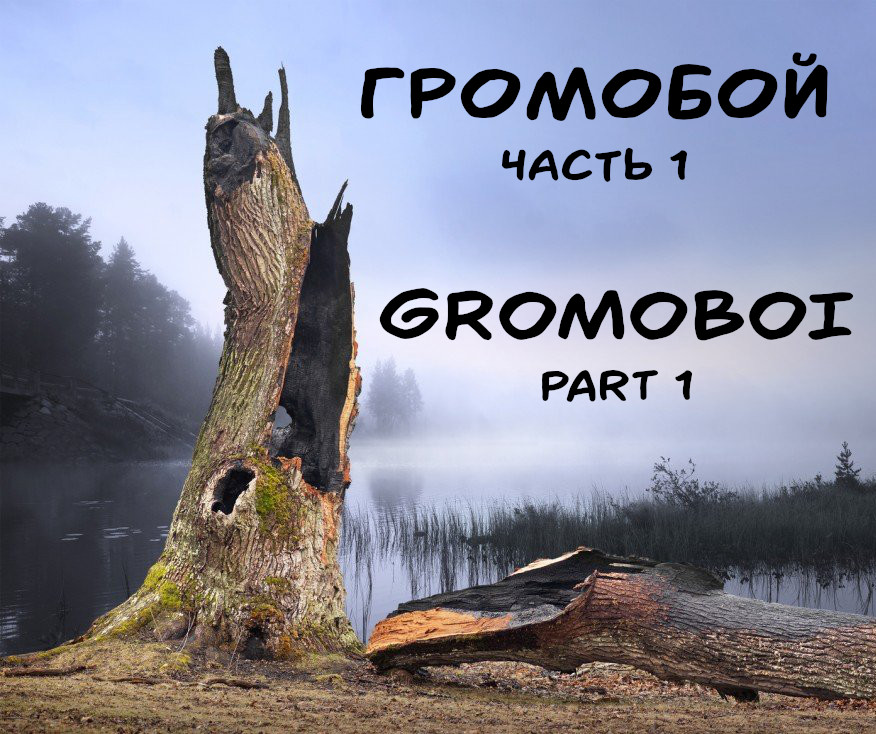
Perun’s Oak – part 4
Boar worship evidence was repeatedly found in multiple archaeological sites. In the burial mounds of the Dnieper region, wild boar tusks amulets are often found. In the Kiev necropolis, they were found both in ordinary and in rich graves.
ꏍ
In 1908, 1975 and 1984 ancient oak trees with boar jaws affixed in them, were elevated from the bottom of Dnieper and Desna rivers. These sacred oak trees are dated from VIII to X century. They confirm a close connection between the cults of the boar and the sacred oak in Slavic mythology. Researchers believe that these sacred oaks with embedded boar tusks were dedicated to the god of thunder and lightning Perun. It was also observed that, as a rule, pagan sanctuaries were located at the intersection of trade routes, before and after especially dangerous and difficult parts of a caravan path (for example, the Dnieper cascades), or at the beginning of the next stage of a long (and often dangerous) journey.
ꏍ
Sources:
G. Yu. Ivakin «The sacred oak of the pagan Slavs», 1979
K. V. Bolsunovsky «Perun’s oak», 1914
Photo: ancient oak bark with affixed boar jaws in the Kiev History Museum
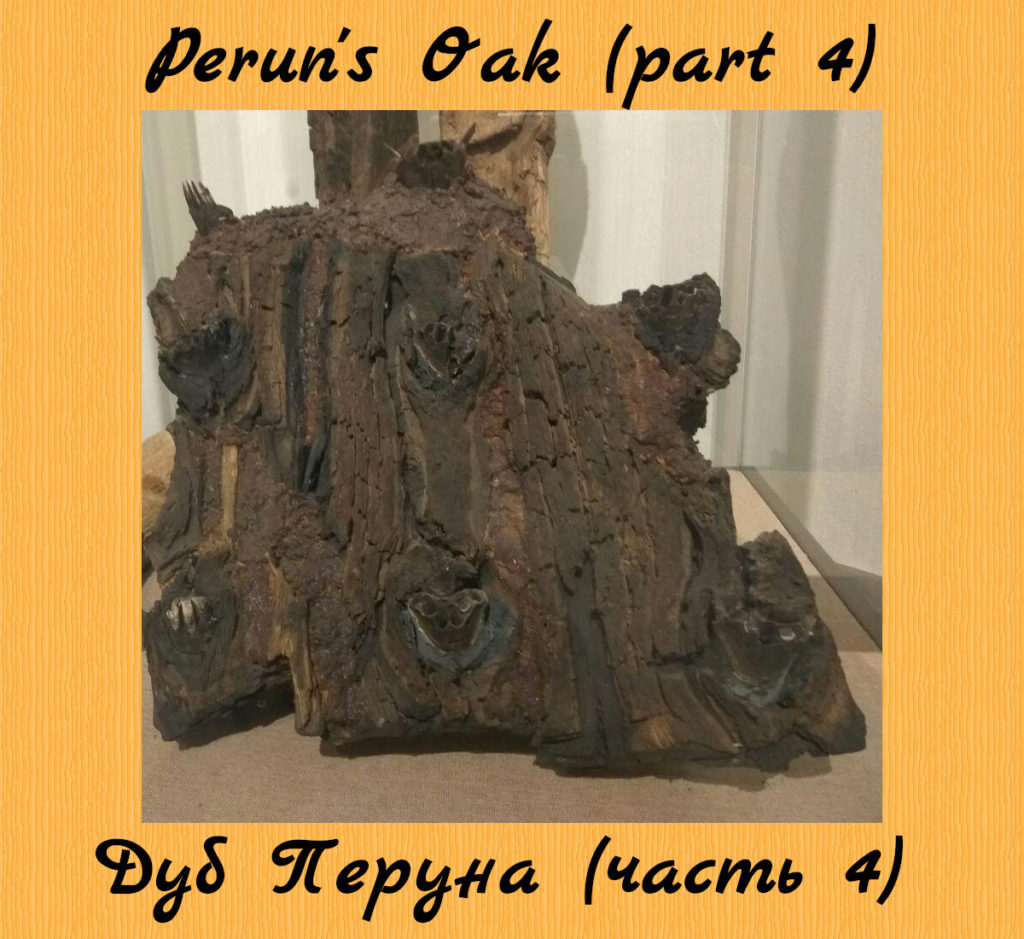
Perun’s Oak – part 3
Along with the cult of trees, the ancient Slavs also worshiped certain animals, for example, a wild boar. Old Russian chronicles and epic tales repeatedly tell about the wild boar hunts and the festive eating of the boar meat at duke’s feasts. Thus, in 1255, duke Daniel Galitsky “personally killed three of them with a spear” while hunting on boars. Some researchers believe that duke’s feasts were the “echoes” of ancient public sacrifices, culminated in a ritual feast. It is also noted that usually the ritual eating of pork meat fell on Thursday, a day dedicated to the God of Thunder and Lightning.
ꏍ
The ceremonial eating of pork was widespread not only among the Slavs. It is known that during a thunderstorm, the Balts had a custom to take out a leg of ham in the field and address Perun: “Abstain, Perkun, from destroying my field – and I will give you this ham for it.” When the thunderstorm stopped, the ham was eaten as a sacrificial meal.
ꏍ
To be continued…
